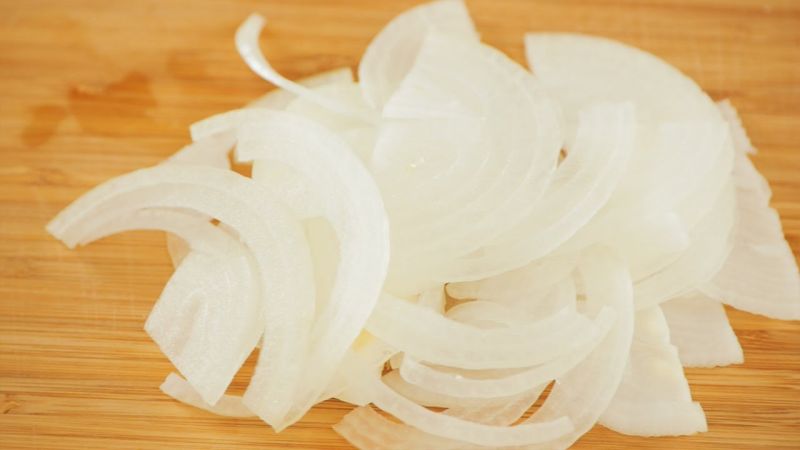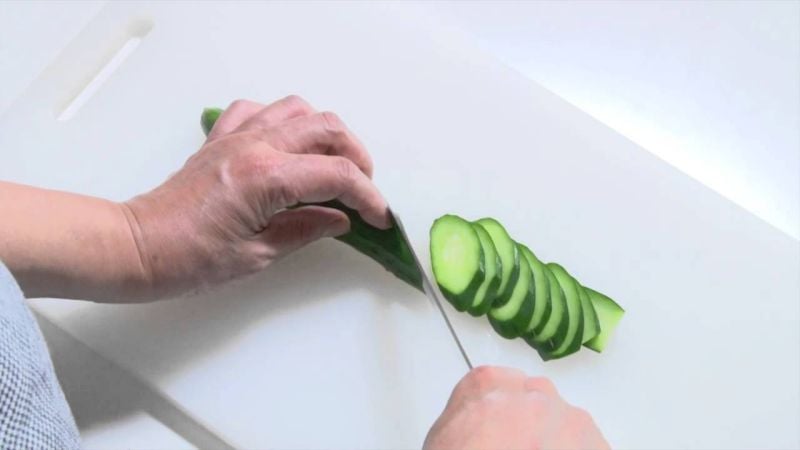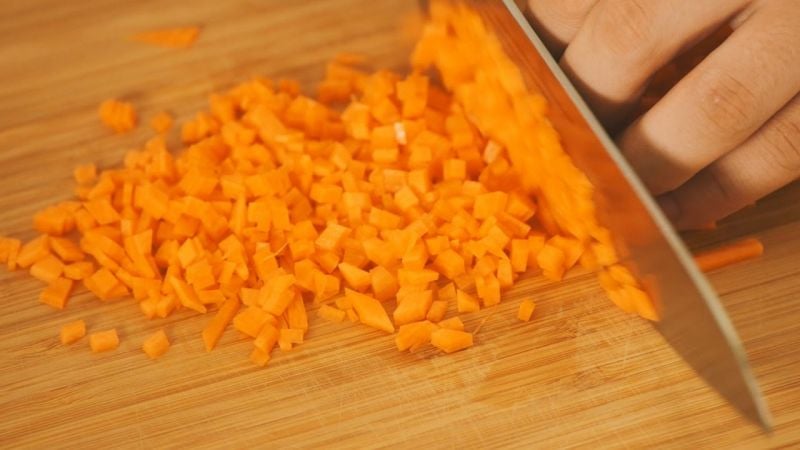Japanese cuisine is so rich that it even has cutting techniques named after it. Cutting techniques can even affect its flavor and texture, in addition to improving the appearance of food, turning cooking into art.
Japanese cutting techniques are called yasai no kiri kata [野菜の切り方] which literally means ways to cut vegetables. Each type of cut has its own specific name, there are dozens that we will mention briefly in the article.
Japanese cutting technique - Video
If you enjoy Japanese cuisine and want to venture into the kitchen, learning some cutting techniques can be quite useful! Take a look at each of them below:
USUGIRI [薄切り] - Thin Slices
Usugiri consists of thin slices. Suitable for salads, preserves, frying, stews. Used in vegetables like cucumber, ginger, onion, eggplant, chives, etc.

NANAMEGIRI [斜め切り] - Diagonal cut
Nanamegiri it is about cutting against fiber diagonally into oval-shaped slices. Used in vegetables like chives, cucumbers, carrots, etc.
We also have Naname Usugiri [斜め薄切り] which are thin diagonal slices. Suitable for salads. Used in vegetables like chives, celery, etc.

The article is still halfway through, but we recommend also reading:
WAGIRI [輪切り] - Round cut
Description: round cut, the thickness varies according to the recipe.Suitable for dishes cooked over low heat. Used in vegetables like cucumber, daikon, tomato, eggplant, carrot, lotus root, etc.
RANGIRI [乱切り] - Random cut
Description: cut at random, but the same size. Helps to cook faster and more evenly. Suitable for stews. Used in vegetables like carrot, cucumber, daikon, eggplant, lotus root, burdock, etc.
KOGUCHIGIRI [小口切り] - Thin slices
Description: cut into thin slices. The thickness varies depending on the recipe, but is around 2-3 mm. Used in vegetables like chives, cucumbers, etc.
KUSHIGATAGIRI [くし形切り] - Comb cutting
Description: cut spherical vegetables into 6 or 8 slices. Used in vegetables like cabbage, onion, tomato, lemon, etc.
MIJINGIRI [みじん切り] - Uniformly chopped
Description: Chop into small pieces evenly. Used in vegetables like onion, carrot, ginger, garlic, chives, etc.

HANGETSUGIRI [半月切り] - Half Moon
Description: “half moon” cut – cut into semi-circles. Suitable for soups and stews. Used in vegetables like cucumber, daikon, tomato, eggplant, carrot, lotus root, etc.
ICHOGIRI [いちょう切り] - Ginkgo Leaf
Description: Cut “ginkgo leaf”Suitable for soups and stews. Used in vegetables like daikon, carrot, etc.
HYOSHIGIRI [拍子木切り] - Cut into sticks
Description: cut into sticks [5 cm x 1 cm x 1 cm]. Suitable for frying and cooking. Used in vegetables like daikon, carrot, etc.
SAINOMEGIRI [さいの目切り] - Cut into cubes
Description: cut into cubes – generally, the thickness is 1 cm.Suitable for soups and salads. Used in vegetables like daikon, carrot, cucumber, etc.
HOSOGHIRI [細切り] - Thin strips
Description: very thin strips [4-5 cm x 3 mm]Suitable for stews and salads. Used in vegetables like cucumber, burdock, potato, daikon, carrot, chives, bell pepper, etc.
SENGIRI [千切り] - Julienne Cut
Description: finely cut, in the style "Julienne". Used in vegetables like cabbage, ginger, daikon, carrot, etc.
ZAKUGIRI [ザク切り] - Thick Cut
Description: thick cut, usually 3 to 4 cm. wide, and not uniform.Suitable for frying and stews in the nabemono. Used in vegetables like cabbage, green vegetables, tomato, chives, etc.
BUTSUGIRI [ぶつ切り] - Rustic Chopping
Description: cut into 3 cm pieces. approx.Suitable for stews. Used in vegetables like chives, celery, etc.
TANZAKUGIRI [短冊切り] - Cut Paper Strips
Description: Cut “paper strips”.Suitable for salads and soups. Used in vegetables like daikon, carrots, konnyaku, etc.
SASAGAKI [ささがき] - Pencil sharpener
Description: scrape the end of the vegetable, as if sharpening a pencil with a knife.Suitable for salads and soups. Used on vegetables like burdock, carrots, etc.
SOGIGIRI [そぎ切り] - Angle cut
Description: Slicing into pieces at an angle [45 degree angle]. Helps cook faster and more evenly. Used in vegetables like mushrooms, cabbage, chard, etc.
HANA RENKON [花レンコン] - Lotus Root
Description: Shape the lotus root into a flower and slice it. Used in vegetables like lotus root.
KAZARIKIRI [飾り切り] - Decorative Cut
Description: decorative cut. Some examples are the flower-shaped carrots [hanagiri] made by hand or with special molds and the shiitake with flower-shaped incisions on its surface.Suitable for decoration. Used in vegetables like mushroom shiitake, carrot, lotus root, etc.







